It looks like you're using an Ad Blocker.
Please white-list or disable AboveTopSecret.com in your ad-blocking tool.
Thank you.
Some features of ATS will be disabled while you continue to use an ad-blocker.
20
share:

Link
A team of archaeologists from the French-Egyptian Centre for the Study of Karnak Temples has made a new discovery near the temple of Ptah at Karnak, Luxor, Egypt, during routine excavation works.
Another great discovery. I can only imagine what is buried beneath all that sand. I just want to suck it all up with a giant vacuum cleaner to reveal all of the secrets that hide beneath.
“Built during the reign of Thutmose III (1479 – 1424 BC), the temple of Ptah was restored, enlarged and adapted throughout the period before the reign of Emperor Tiberius (14-37 AD),” the scientists said.
Below: Head of 2,800-year-old statue probably representing Imhotep, an architect, high priest, and physician who lived around 2650 BC.
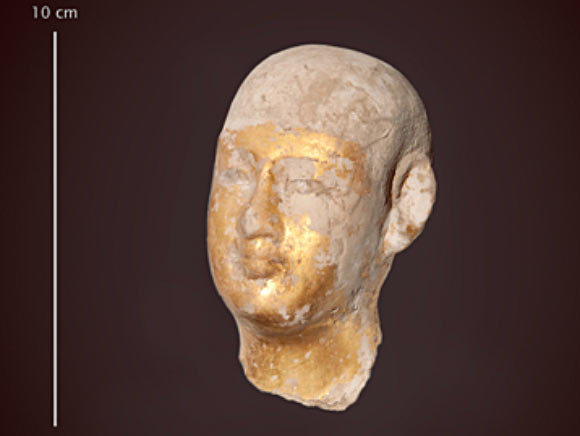
“The dig has yielded 38 statues, statuettes and precious objects, making this an exceptional find, both for the quantity and quality of the religious artifacts brought to light,” they said.
Below: Osiris statuette and figurine.
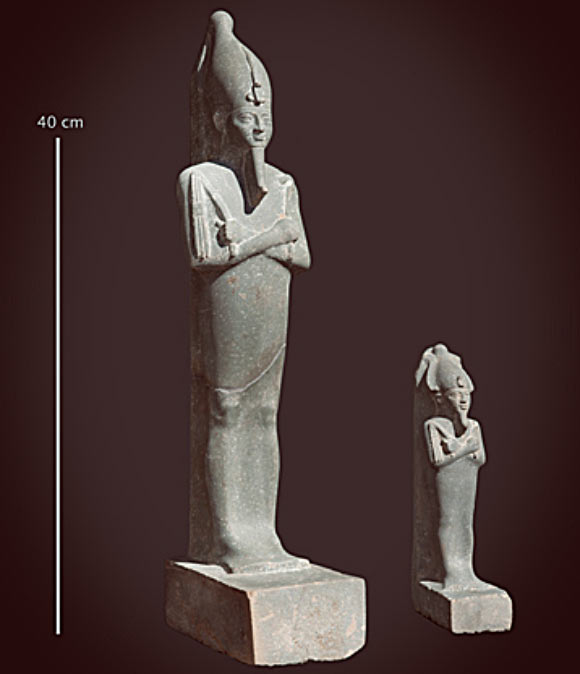
The article didn't mention any signs of looting so that's good. Its upsetting to think we only get what's left after the reaping. Grave robbers and looters who prevent us from understanding our past to the fullest have there special place in hell.
These artifacts date from the 25th Dynasty, also known as the Nubian Dynasty (760 – 656 BC) – the last dynasty of the Third Intermediate Period of Ancient Egypt, and include 14 statues and figurines of Osiris, three statuettes of baboons, two statuettes of the goddess Mut, head and fragments of a cat statuette, two unidentified statuette bases, and several inlays – iris, cornea, beards, headdresses.
Below: Statuette of a goddess discovered near the temple of Ptah.
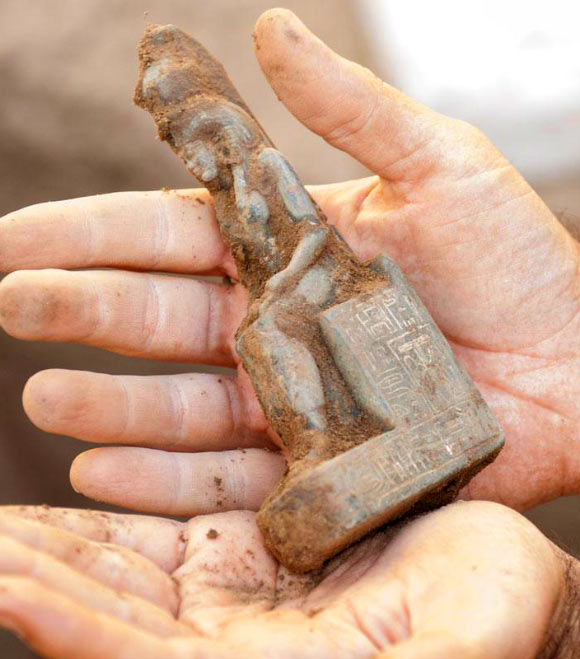
I find it interesting that for a place built 3,500 years ago, it contained so many different treasure from vastly different time periods such as the statues of Osiris found only 2600 years ago. As recent as this find may be, there have been many amazing discoveries already found at the site of Karnak and the Luxor area. You will be amazed!
Pictures of the newly excavated sphinx are slim at the moment. Archeologist have recently been given the green light for restoration and pictures should start emerging soon.
“The statuette is complete, with the exception of the nose that seems to have disappeared in antiquity. The left front paw, broken, was found positioned on top of the right front paw of the sphinx against the edge of the pit. No inscription was found for the moment, but the restoration of the sphinx starts only.”

edit on 8-3-2015 by eisegesis because: (no reason given)
Couldn't they take the sphinx out of the pit? I would like to see the face.
originally posted by: VictorVonDoom
Couldn't they take the sphinx out of the pit? I would like to see the face.
It probably looked similar to this one. Isn't she beautiful?
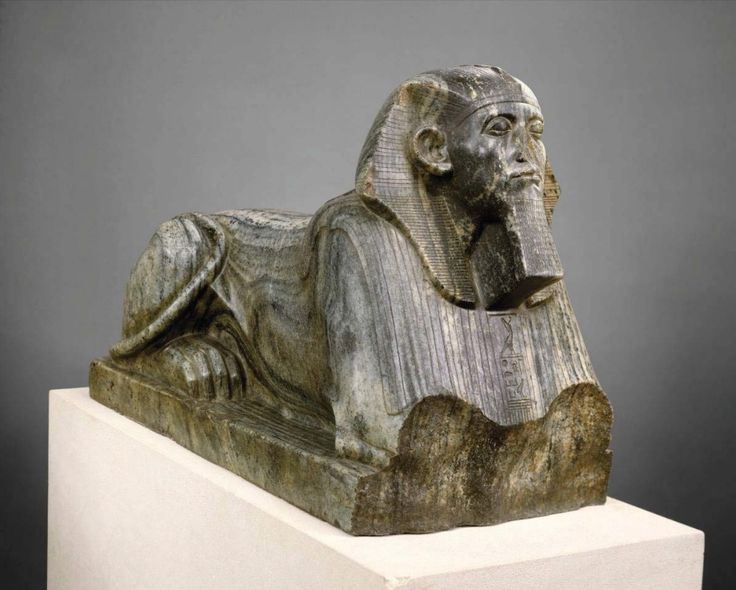
a reply to: VictorVonDoom
I was thinking the same thing, would love to see what the original face was.
Great thread eisegesis, S&F. I too wish they would allow more excavations, especially under the sphinx.
I was thinking the same thing, would love to see what the original face was.
Great thread eisegesis, S&F. I too wish they would allow more excavations, especially under the sphinx.
a reply to: stosh64
We are now entering the drone era. Think of the possibilities.
Imagine sending mini drones through the deepest, darkest caves in existence only to discover 2 Pac, Elvis, Hitler and every kid who's face was ever on a milk carton. They each have their roles. Hitler does dishes, sweeps and dusts in his pink apron, Elvis is a hunter/gatherer who collects glow worms and blind lizards, while 2 Pac holds down the fort. The kids are used for slave labor until they mature only to be served as tomorrows soup of the day. True story bro.
We are now entering the drone era. Think of the possibilities.
Imagine sending mini drones through the deepest, darkest caves in existence only to discover 2 Pac, Elvis, Hitler and every kid who's face was ever on a milk carton. They each have their roles. Hitler does dishes, sweeps and dusts in his pink apron, Elvis is a hunter/gatherer who collects glow worms and blind lizards, while 2 Pac holds down the fort. The kids are used for slave labor until they mature only to be served as tomorrows soup of the day. True story bro.

What is this, an ancient Egyptian temple for ants?
But seriously, nice find.
a reply to: Blackmarketeer
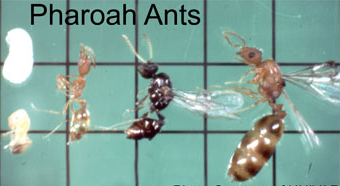
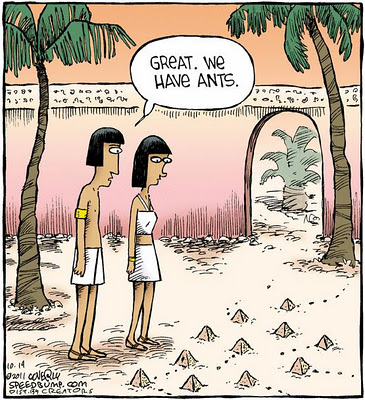
What is this, an ancient Egyptian temple for ants?


edit on 8-3-2015 by eisegesis because: (no reason given)
originally posted by: VictorVonDoom
I would like to see the face.
This is what most interests me. I have read many compelling threads/posts on ATS suggesting the head of the Great Sphinx of Giza was actually carved out to replace its original lion head. So I find it fascinating this one appears to also be a humanoid face.
I suppose they were just making statues in that tradition and unaware the Great Sphinx originally had a lions face [if in fact it did].
edit on
8-3-2015 by Lucid Lunacy because: (no reason given)
a reply to: eisegesis
i think the dig started in 2008 , i was in Luxor at that time when a man was digging out the footings for an extension on his house and he uncovered a sphinx .
it was reported that there was a row of sphinx's on both sides of a road leading to the karnak temple .
i think the dig started in 2008 , i was in Luxor at that time when a man was digging out the footings for an extension on his house and he uncovered a sphinx .
it was reported that there was a row of sphinx's on both sides of a road leading to the karnak temple .
Some more fascinating info...
A completely new recording method was used during the dig that made it possible for them to virtually reconstruct each step of the discovery with millimeter accuracy. How amazing would it be to download the excavation site, slap on VR goggles and start digging. Hurry up future!
A completely new recording method was used during the dig that made it possible for them to virtually reconstruct each step of the discovery with millimeter accuracy. How amazing would it be to download the excavation site, slap on VR goggles and start digging. Hurry up future!
The excavation of the objects was recorded by a topographer specialized in archaeology who made a series of photogrammetric reconstructions by high-density image correlation, from the discovery of the first object until the complete removal of the statues from the pit. This technique consists in compiling hundreds of photographs taken during the fieldwork to make a virtual 3-D reconstruction of each step of the excavation. By linking these photogrammetric reconstructions with very precise topographical reference points -- to within a few millimeters -- this method makes it possible to locate all the objects after they have been removed and study their layout in detail. It also enabled the scientists to assemble a video of the whole removal operation, which needed to be completed rapidly due to the objects' value, while preserving the data collected on the site as it was discovered.
new topics
-
BIDEN Admin Begins Planning For January 2025 Transition to a New President - Today is 4.26.2024.
2024 Elections: 2 hours ago -
Big Storms
Fragile Earth: 3 hours ago -
Where should Trump hold his next rally
2024 Elections: 6 hours ago -
Shocking Number of Voters are Open to Committing Election Fraud
US Political Madness: 6 hours ago -
Gov Kristi Noem Shot and Killed "Less Than Worthless Dog" and a 'Smelly Goat
2024 Elections: 7 hours ago -
Falkville Robot-Man
Aliens and UFOs: 7 hours ago -
James O’Keefe: I have evidence that exposes the CIA, and it’s on camera.
Whistle Blowers and Leaked Documents: 8 hours ago -
Australian PM says the quiet part out loud - "free speech is a threat to democratic dicourse"...?!
New World Order: 9 hours ago -
Ireland VS Globalists
Social Issues and Civil Unrest: 9 hours ago -
Biden "Happy To Debate Trump"
2024 Elections: 10 hours ago
top topics
-
James O’Keefe: I have evidence that exposes the CIA, and it’s on camera.
Whistle Blowers and Leaked Documents: 8 hours ago, 16 flags -
Australian PM says the quiet part out loud - "free speech is a threat to democratic dicourse"...?!
New World Order: 9 hours ago, 14 flags -
Blast from the past: ATS Review Podcast, 2006: With All Three Amigos
Member PODcasts: 12 hours ago, 13 flags -
Biden "Happy To Debate Trump"
2024 Elections: 10 hours ago, 12 flags -
Ireland VS Globalists
Social Issues and Civil Unrest: 9 hours ago, 9 flags -
Mike Pinder The Moody Blues R.I.P.
Music: 12 hours ago, 8 flags -
What is the white pill?
Philosophy and Metaphysics: 12 hours ago, 6 flags -
Shocking Number of Voters are Open to Committing Election Fraud
US Political Madness: 6 hours ago, 6 flags -
RAAF airbase in Roswell, New Mexico is on fire
Aliens and UFOs: 10 hours ago, 5 flags -
Where should Trump hold his next rally
2024 Elections: 6 hours ago, 5 flags
active topics
-
Gold and silver prices....woo hoo
History • 88 • : SchrodingersRat -
University of Texas Instantly Shuts Down Anti Israel Protests
Education and Media • 314 • : Schmoe3755 -
BIDEN Admin Begins Planning For January 2025 Transition to a New President - Today is 4.26.2024.
2024 Elections • 10 • : BingoMcGoof -
President BIDEN's FBI Raided Donald Trump's Florida Home for OBAMA-NORTH KOREA Documents.
Political Conspiracies • 39 • : AwakeNotWoke -
Gov Kristi Noem Shot and Killed "Less Than Worthless Dog" and a 'Smelly Goat
2024 Elections • 55 • : AwakeNotWoke -
RAAF airbase in Roswell, New Mexico is on fire
Aliens and UFOs • 10 • : Ophiuchus1 -
Big Storms
Fragile Earth • 13 • : AwakeNotWoke -
SHORT STORY WRITERS CONTEST -- April 2024 -- TIME -- TIME2024
Short Stories • 26 • : Encia22 -
Biden "Happy To Debate Trump"
2024 Elections • 50 • : Lumenari -
Falkville Robot-Man
Aliens and UFOs • 9 • : CosmicFocus
20
